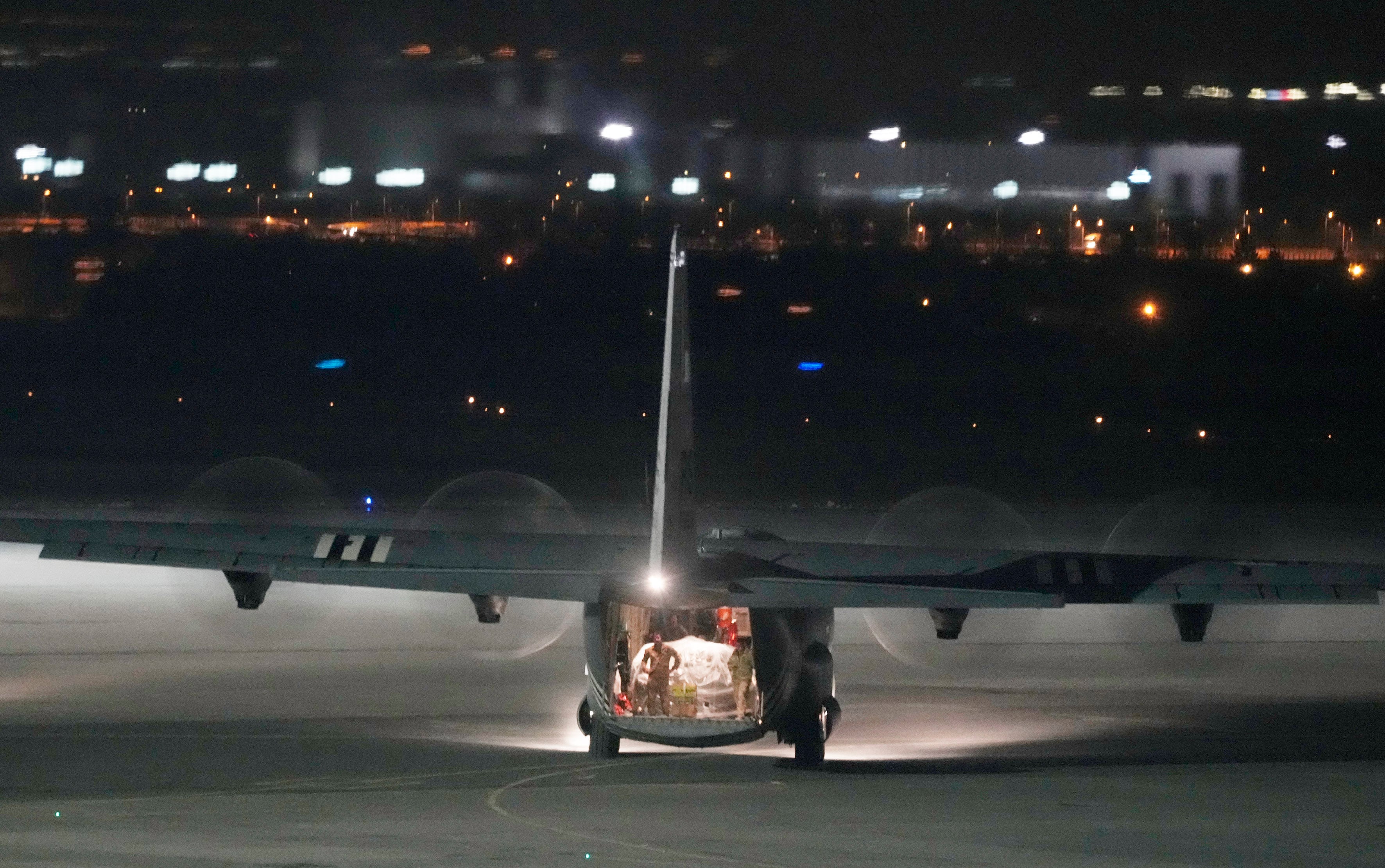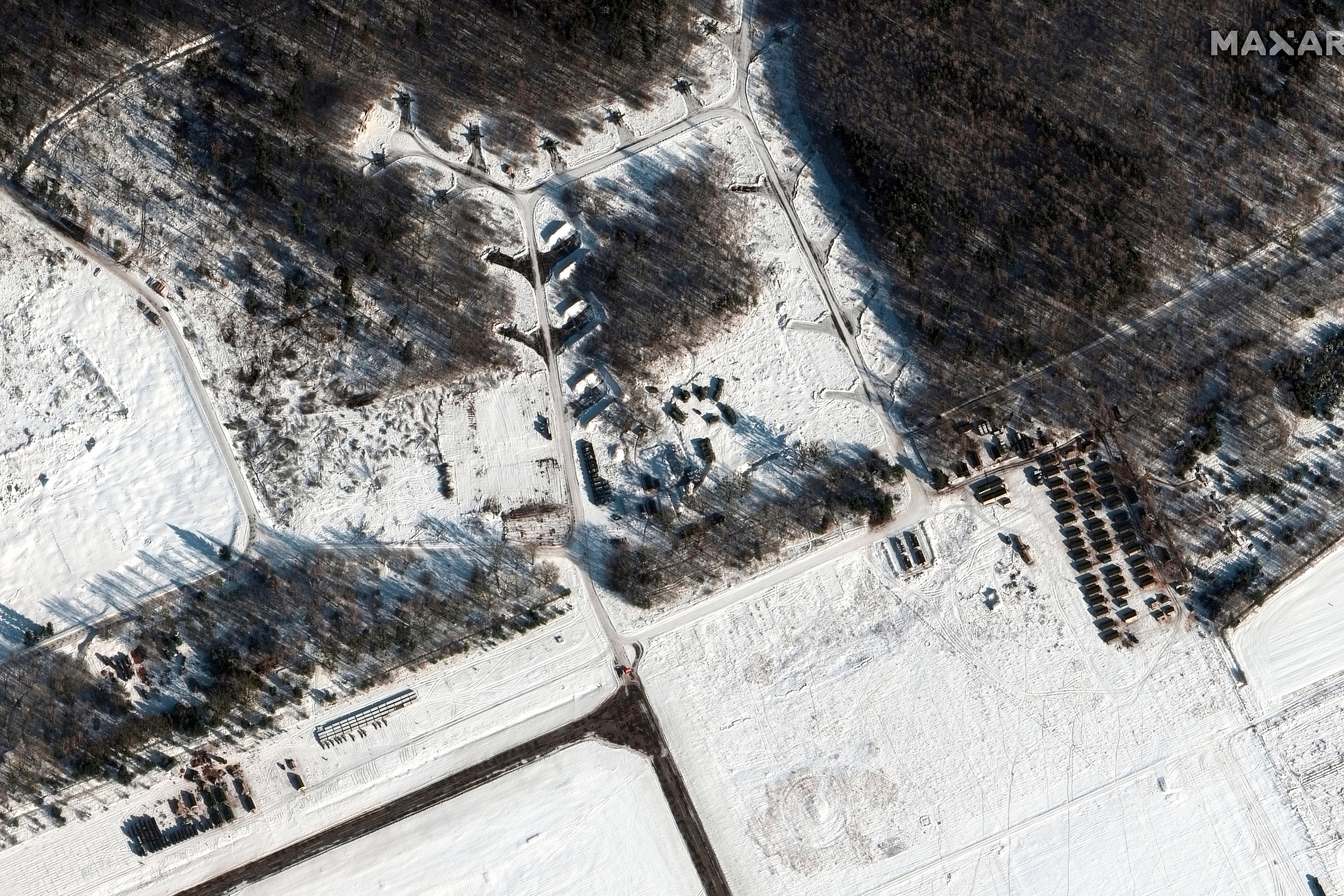MOSCOW — Russia on Saturday sent a pair of long-range nuclear-capable bombers on patrol over its ally Belarus amid spiraling tensions over Ukraine.
The Russian Defense Ministry said the two Tu-22M3 bombers practiced interacting with the Belarusian air force and air defense during a four-hour mission. The flight followed several similar patrols over Belarus, which borders Ukraine to the north.
The mission came as the Kremlin has moved troops from Siberia and the Far East to Belarus for sweeping joint drills. The deployment added to the Russian military buildup near Ukraine, fueling Western fears of a possible invasion.
RELATED

Russia has denied any plans of attacking Ukraine, but urged the U.S. and its allies to provide a binding pledge that they won’t accept Ukraine into NATO, won’t deploy offensive weapons, and will roll back NATO deployments to Eastern Europe. Washington and NATO have rejected the demands.
The West has called on Russia to pull back an estimated 100,000 troops from areas near Ukraine, but the Kremlin has responded by saying it will station troops wherever it needs to on Russian territory. As the tensions over Ukraine soared, the Russian military has launched a series of war games spreading from the Arctic to the Black Sea.
The Russian troop deployment to Belarus raised concerns in the West that Moscow could stage an attack on Ukraine from the north. The Ukrainian capital of Kyiv is just 75 kilometers (50 miles) from the Belarus border.
In recent months, Russia has conducted a series of joint drills with Belarus and repeatedly sent its nuclear-capable long-range bombers to patrol over Belarus, which borders NATO members Poland, Lithuania and Latvia.
Belarus’ authoritarian leader Alexander Lukashenko, who has increasingly relied on the Kremlin’s political and financial support amid bruising Western sanctions triggered by his crackdown on domestic protests, has called for closer defense ties with Moscow and recently offered to host Russian nuclear weapons.

In an interview with a Russian state TV host aired Saturday, Lukashenko charged that the Russian-led security alliance demonstrated its quick deployment capability when its members briefly sent forces last month to Kazakhstan to help stabilize the situation after deadly riots.
“While they [NATO] will be still getting prepared to send some troops here, we will already stand at the English Channel, and they know it,” he said in a reference to Western allies.
The Belarusian leader downplayed the threat of war, but added that if it still erupts “it will last for three or four days at most.”
“There is no one there to fight us,” he said about Ukraine.
On Saturday, the German newspaper Bild published a report alleging that Russia is poised to attack Ukraine from several directions, capture major cities and install a puppet government. Russian Foreign Ministry spokeswoman Maria Zakharova angrily dismissed the allegations.
As war fears mounted, Ukrainian authorities launched a series of civil defense drills for residents.
“I am here to learn how to defend myself, defend my relatives and also understand how to act in the situation,” Kyiv resident Ilya Goncharov said after taking part in drills on the outskirts of the Ukrainian capital. “I am happy that I came here to learn the basics of self defense and first aid.”
In Kharkiv, Ukraine’s second-largest city just 25 kilometers (15 miles) south of the Russian border, thousands of people took to the streets Saturday carrying giant yellow-and-blue banners in the colors of the national flag in a show of determination to protect the city.
“We want to show that there are people in Kharkiv who are ready to defend it and fight back,” said marcher Svitlana Galashko.
Amid the standoff over Ukraine, U.S. President Joe Biden has ordered 2,000 U.S.-based troops to Poland and Germany and shifted 1,000 more from Germany to Romania in a show of the U.S. commitment to NATO’s eastern flank.
Earlier this week, Russian President Vladimir Putin has signaled Moscow’s readiness for more talks with Washington and its NATO allies. As part of high-level diplomacy to ease the tensions, French President Emmanuel Macron is set to head to Moscow and Kyiv on Monday and Tuesday, while German Chancellor Olaf Scholz will travel to Kyiv and Moscow on Feb. 14-15.
On Saturday, British Prime Minister Boris Johnson had a call with Macron and “they agreed that finding a diplomatic solution to the current tensions must remain the overriding priority.”
Johnson’s office said he and the French president “also stressed that NATO must be united in the face of Russian aggression” and “agreed to continue to work together to develop a package of sanctions which would come into force immediately should Russia further invade Ukraine.”
Ukrainian President Volodymyr Zelenskyy also spoke Saturday with European Council President Charles Michel, saying on Twitter that the tensions around Ukraine’s situation must be de-esclated.
In 2014, Russia annexed Ukraine’s Crimean Peninsula after Ukraine’s Moscow-friendly leader fled the country. Russia also threw its weight behind a separatist insurgency in eastern Ukraine, where over 14,000 have been killed in fighting.
Amid the tensions with the West, Putin on Friday attended the opening of the Winter Olympics in Beijing and met with China’s leader Xi Jinping to strengthen the two countries’ alliance. In a joint statement, Putin and Xi declared their opposition to any expansion of NATO while affirming that the island of Taiwan is a part of China.
Putin and Xi announced that the relations between Moscow and Beijing are “superior to political and military alliances of the Cold War era” and their friendship “has no limits.”
Yuras Karmanau in Kyiv, Ukraine and Danica Kirka in London contributed to this report.




